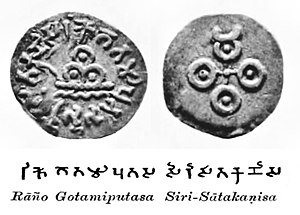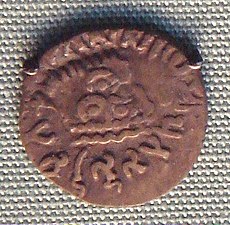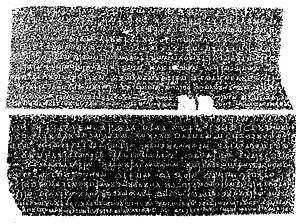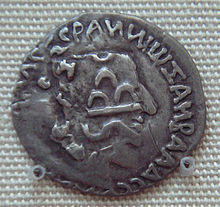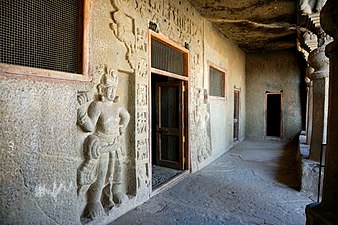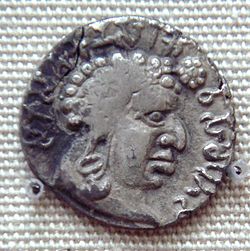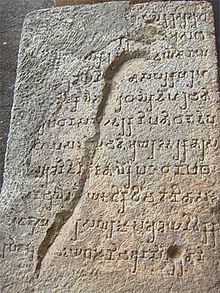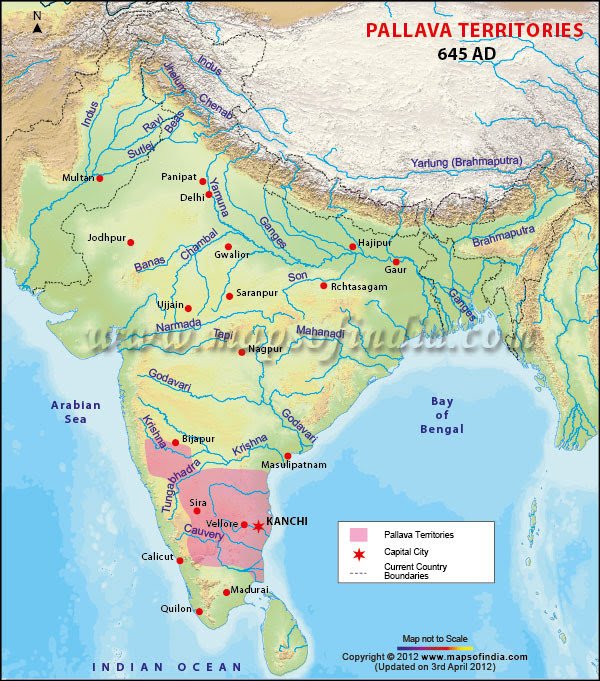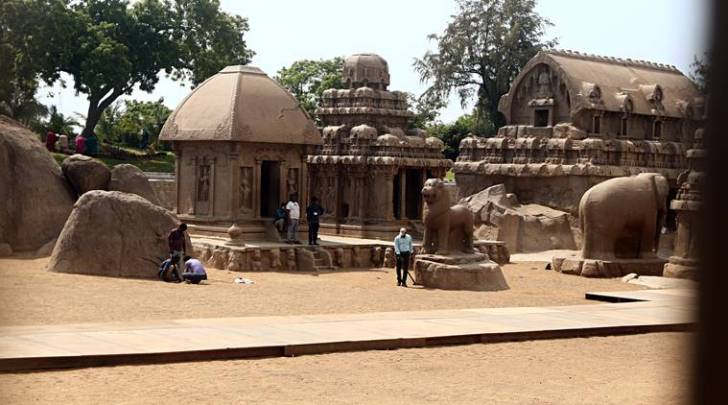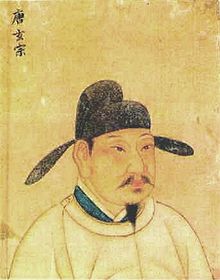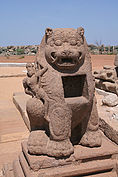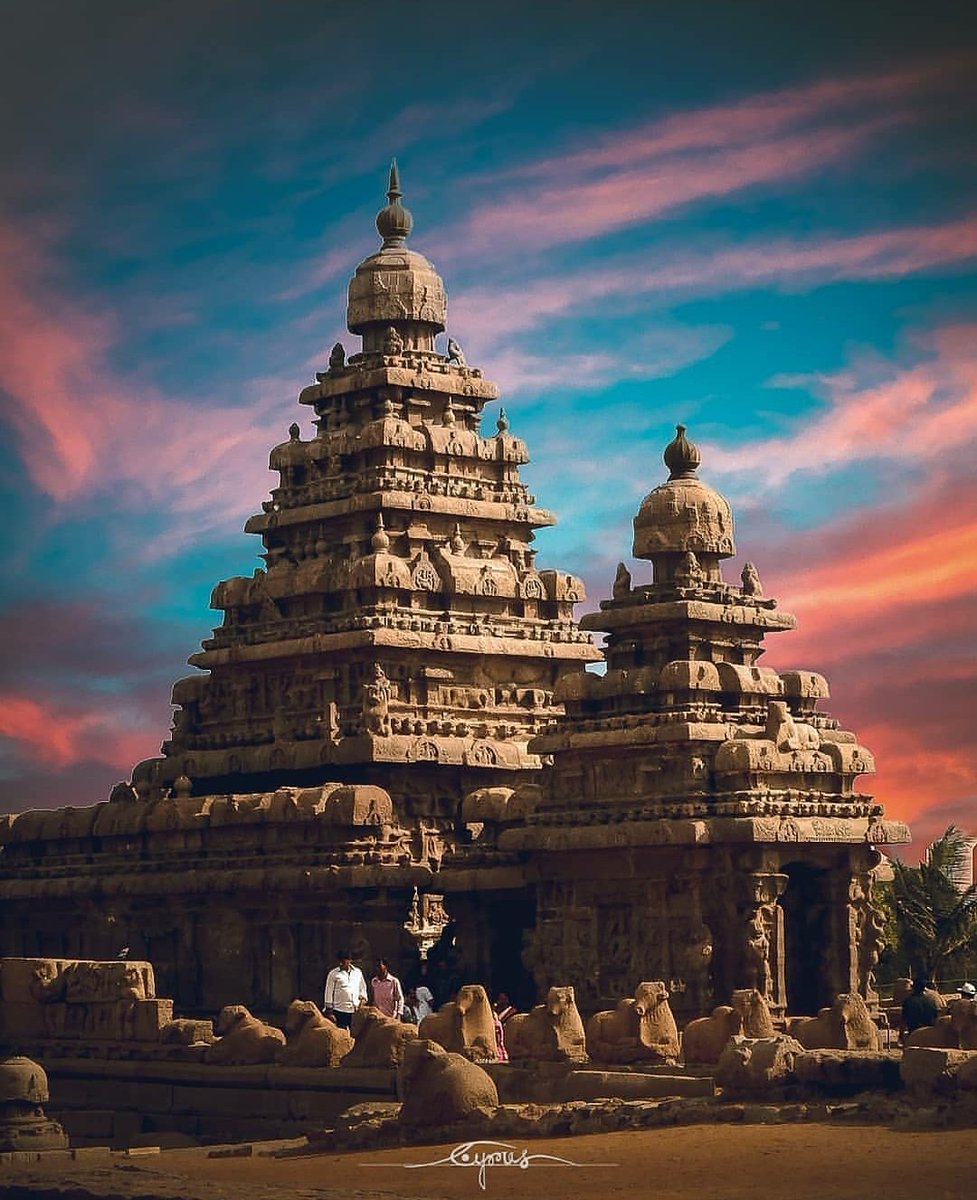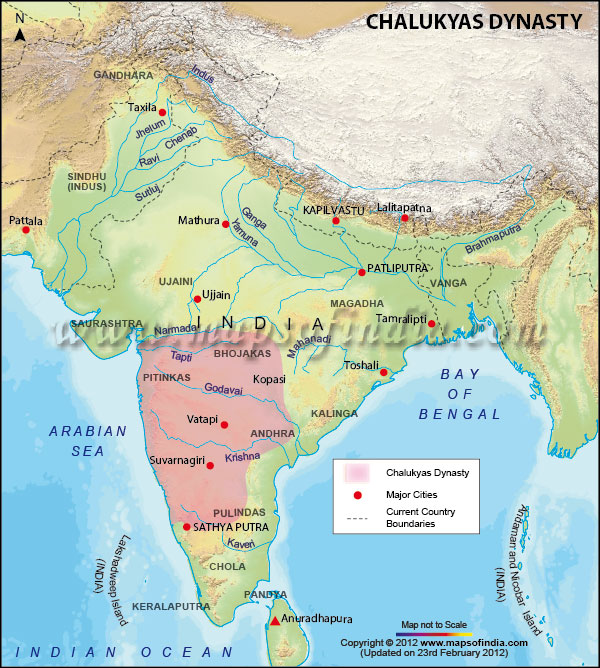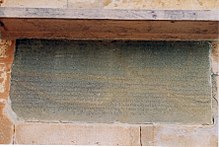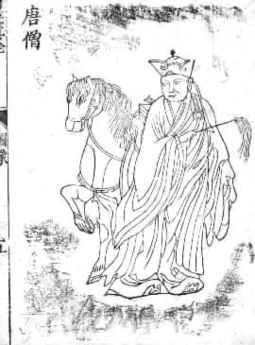Empires of India: Part 2
This chapter will continue the brief descriptions of Indian Empires till 7th Century AD.
This chapter will continue the brief descriptions of Indian Empires till 7th Century AD.
8. The Satvahanas ( 2nd Century BCE to early Third Century AD )
The Satvahanas, also called the & #39;Andhras& #39; in Puranas created an empire in the South.
Their empire was composed of modern Telangana, Andhra Pradesh and Maharashtra.
The Satvahanas, also called the & #39;Andhras& #39; in Puranas created an empire in the South.
Their empire was composed of modern Telangana, Andhra Pradesh and Maharashtra.
However, during various times, particularly under their great king Gautamiputra Satkarni, the extent of their dominions reached as far as Gujarat, Konkan and parts of MP, and in the south up to modern Karnataka.
We hear about Satvahanas from Puranas, who calls them & #39;Andhras& #39;.
Matasya Purana mentions Andhra dynasty kings ruling for 450 years.
Megasthenes mentions about & #39; Andarae& #39; whose king had an army of 100,000 infantry, 2,000 cavalry & 700 elephants.
Matasya Purana mentions Andhra dynasty kings ruling for 450 years.
Megasthenes mentions about & #39; Andarae& #39; whose king had an army of 100,000 infantry, 2,000 cavalry & 700 elephants.
The Satvahana rulers were orthodox Hindus, who supported Hinduism to the core and supported prakrit literature.
Satvahanas beat the Indo-Scythians ( Sakas), Indo-Parthians ( Pahlavas), & Greeks ( yavanas), and their rulers performed Ashvamedha Yagyas to stamp their authority.
Satvahanas beat the Indo-Scythians ( Sakas), Indo-Parthians ( Pahlavas), & Greeks ( yavanas), and their rulers performed Ashvamedha Yagyas to stamp their authority.
Their first famous king was Satkarni - I ( 70-60 BCE), who conducted two Ashvamedha Yagyas and struck coins in his name.
Image of coin of Satkarni - I & his Naneghat Rock inscription.
Image of coin of Satkarni - I & his Naneghat Rock inscription.
Gautamiputra Satkarni ( circa 106-130 AD)
The credit for Satvahana emergence as a great power goes to its illustrious king, Gautamiputra Satkarni.
He created a large empire from Kaveri to Vindhyas & from Andhra to Gujarat and parts of Konkan.
The credit for Satvahana emergence as a great power goes to its illustrious king, Gautamiputra Satkarni.
He created a large empire from Kaveri to Vindhyas & from Andhra to Gujarat and parts of Konkan.
Gautamiputra Satkarni was in constant wars with Sakas under Nahapana, who ruled parts of Gujarat and Konkan.
By his own inscriptions, Satkarni states that he "exterminated the Kshtratas"( Sakas) and restruck coins of Nahapana under his name.
Image of a restruck coin of Satkarni
By his own inscriptions, Satkarni states that he "exterminated the Kshtratas"( Sakas) and restruck coins of Nahapana under his name.
Image of a restruck coin of Satkarni
Inscription of his mother, Queen Gautami states that Satkarni not only destroyed " Yavanas, Pahlavas, but also exterminated Kshtratas and brought glory to the Satvahana race".
Image of the Inscription of Queen Gautami Balashri at Cave No.3 of the Pandavleni Caves in Nashik.
Image of the Inscription of Queen Gautami Balashri at Cave No.3 of the Pandavleni Caves in Nashik.
There is no doubt that Satkarni was the greatest Andhra king of all time.
Due to his efforts, the foreigners like Sakas, Pahlavas, etc could not cross the Vindhyas.
Historians state that he made his son Vasisthiputra Satkarni as a co-ruler in his last years.
A coin of Satkarni
Due to his efforts, the foreigners like Sakas, Pahlavas, etc could not cross the Vindhyas.
Historians state that he made his son Vasisthiputra Satkarni as a co-ruler in his last years.
A coin of Satkarni
Cave number 3, Pandavleni caves were probably constructed under Satkarni.
The inscriptions in the cave gives a lot of information about Satkarni & his victories and many other inscriptions dating back to at least 1st Century BCE.
Images of Cave number 3 Pandavleni caves, Nasik
The inscriptions in the cave gives a lot of information about Satkarni & his victories and many other inscriptions dating back to at least 1st Century BCE.
Images of Cave number 3 Pandavleni caves, Nasik
Vasishthiputra Pulumavi ( Circa 130-150 AD)
He was the son and successor to Gautamiputra Satkarni.
It seems that Indian naval power was quiet developed by his reign, as seen on his lead coins.
The Pandavleni caves were completed during his era.
Coins of Pulumavi.
He was the son and successor to Gautamiputra Satkarni.
It seems that Indian naval power was quiet developed by his reign, as seen on his lead coins.
The Pandavleni caves were completed during his era.
Coins of Pulumavi.
Vasisthiputra Satkarni ( Circa 150-165 AD)
He was the son of Gautamiputra Satkarni and the brother of Vasisthiputra Pulumavi.
He was constantly troubled by Western Satrapas who were threatening his kingdom, led by their Satrap Rudradaman - I.
He was the son of Gautamiputra Satkarni and the brother of Vasisthiputra Pulumavi.
He was constantly troubled by Western Satrapas who were threatening his kingdom, led by their Satrap Rudradaman - I.
As a peace treaty, he eventually married the daughter of Rudradaman, as stated in the Kanheri inscription.
Images of Kanheri caves and the Kanheri inscription near Sanjay Gandhi National Park, Mumbai.
Images of Kanheri caves and the Kanheri inscription near Sanjay Gandhi National Park, Mumbai.
However, there was another war between him and Rudradaman.
Rudradaman decisively defeated Vasisthiputra Satkarni and Satkarni was spared only due to implorations by Rudradaman& #39;s daughter.
This defeat of Satvahanas was a serious blow to their prestige.
Rudradaman decisively defeated Vasisthiputra Satkarni and Satkarni was spared only due to implorations by Rudradaman& #39;s daughter.
This defeat of Satvahanas was a serious blow to their prestige.
Sri Yajna Satkarni, the last king of the Satkarni line ( 165-190 AD), briefly revived the Andhras & took back areas from Western Satraps.
However, after him the Satvahana empire fragmented in to small states by 225 AD, ruled by feudatories.
Image of coin of Sri Yajna Satkarni.
However, after him the Satvahana empire fragmented in to small states by 225 AD, ruled by feudatories.
Image of coin of Sri Yajna Satkarni.
9. Pallava Dynasty ( Circa 275 AD - 890 AD)
The Pallavas were probably feudatories of Satvahanas.
They came into prominence after the Satvahana empire ended, in the late third century AD.
The Pallavas were probably feudatories of Satvahanas.
They came into prominence after the Satvahana empire ended, in the late third century AD.
Pallavas came into prominence during the reign of their Kings Mahendravarman and Narasimhavarman I (620 AD).
They dominated the northern parts of Tamil Nadu for 600 yrs, & were always in state of war against Chalukyas of Badami, Cholas & Pandyas.
Image of Kalaisanthar Temple
They dominated the northern parts of Tamil Nadu for 600 yrs, & were always in state of war against Chalukyas of Badami, Cholas & Pandyas.
Image of Kalaisanthar Temple
Even before that, the pillar inscription of Samudra Gupta at Prayagraj names Vishnugopa, who was defeated near Kanchipuram.
Historians are also of the view that Samudra Gupta may have had to fight a battle against a coalition led by Pallavas.
Image of temples at Mamallapuram.
Historians are also of the view that Samudra Gupta may have had to fight a battle against a coalition led by Pallavas.
Image of temples at Mamallapuram.
The Pallavas were in a state of war with most of the kingdoms at that time.
They captured Kanchi from the Cholas, and in return were driven away by Cholas sometimes later.
By the 6th century they had again captured Kanchi and were in possession of this region till 9th century.
They captured Kanchi from the Cholas, and in return were driven away by Cholas sometimes later.
By the 6th century they had again captured Kanchi and were in possession of this region till 9th century.
Against Kalabhras, they were much more successful, as the Pallava king Vishnugopavarman - II defeated the Kalabhras.
Shortly after, the Pandyas also defeated Kalabhras and subsequently, Pallavas established Kanchi as their capital, and Pandyas established themselves at Madurai.
Shortly after, the Pandyas also defeated Kalabhras and subsequently, Pallavas established Kanchi as their capital, and Pandyas established themselves at Madurai.
Xuanzang, the Chinese traveller and scholar came to Kanchipuram in circa 635 AD and praised their benign rule.
Image of a Pallava Elephant carved of a single stone, at Mammalapuram.
Image of a Pallava Elephant carved of a single stone, at Mammalapuram.
Relations with China
The Pallavas had extensive trading relations with several countries of SE Asia.
However, their relations with China deserve a special mention here.
Image of Prime Minister Modi with President of China Xi Jinping, Mammalapuram temple in the background.
The Pallavas had extensive trading relations with several countries of SE Asia.
However, their relations with China deserve a special mention here.
Image of Prime Minister Modi with President of China Xi Jinping, Mammalapuram temple in the background.
In 720 AD, the Pallava king Narasimhavarman - II ( 696-729 AD), sent an embassy to the imperial Tang dynasty in China. The purpose for sending the embassy was an unusual one !
Image of Mammalapuram temple, Tamil Nadu.
Image of Mammalapuram temple, Tamil Nadu.
The Embassy of the Pallava king sought an alliance with the Tang dynasty to beat back the Arab and Tibetan incursions into South Asia.
The Chinese were quiet pleased at this offer.
The Chinese were quiet pleased at this offer.
The Tang Emperor Xuanzong ( 713-756 AD) was quiet pleased with the request and bestowed the title of & #39;huaide jun& #39; ( a virtuous army) to the troops of Narasimhavarman- II.
Image of Emperor Xuanzong of Tang Dynasty.
Image of Emperor Xuanzong of Tang Dynasty.
This offer of mutual assistance may have a lot to do with further strengthening the trade and maritime relations of Pallavas with China.
There was no real prospect of the Pallava armies marching north to confront the Tibetan empire !
There was no real prospect of the Pallava armies marching north to confront the Tibetan empire !
Pallava Architectural Heritage: The Shore Temple.
Apart from Mammalapuram, and temples built at Kanchi, the Pallavas constructed the famous & #39;Shore Temple& #39; between 700-720 AD.
The temple is so named as it overlooks the Bay of Bengal.
Apart from Mammalapuram, and temples built at Kanchi, the Pallavas constructed the famous & #39;Shore Temple& #39; between 700-720 AD.
The temple is so named as it overlooks the Bay of Bengal.
Marco Polo and other foreign meranants called this site of Shore temple as the & #39; Site of Seven Pagodas& #39;.
The temple is a UNESCO World Heritage Site.
Images of the Shore Temple, including an aerial view of the Temple and surroundings.
The temple is a UNESCO World Heritage Site.
Images of the Shore Temple, including an aerial view of the Temple and surroundings.
At the end of 9th Century, King Aditya - I of Cholas attacked the Pallavas and killed their king Aparajita in a battle.
That spelt the doom for the Pallavas and whole of their territory became a part of Chola kingdom.
That spelt the doom for the Pallavas and whole of their territory became a part of Chola kingdom.
Chalukya Dynasty ( 7th Century AD- 12th Century AD)
Another prominent Empire of the South was the Chalukyas, who ruled an extensive area from Narmada to Kaveri.
Another prominent Empire of the South was the Chalukyas, who ruled an extensive area from Narmada to Kaveri.
The period of Chalukya dominance of South is also considered by some historians as to be the & #39; Golden Age of Karnataka& #39;.
In terms of art, culture, language and suzerainty, the Chalukya dominance is considered as a watershed era in the history of Karnataka.
In terms of art, culture, language and suzerainty, the Chalukya dominance is considered as a watershed era in the history of Karnataka.
There are many theories about the origin of Chalukyas.
They addressed themselves as & #39;Harithiputras of Manavyasagotra& #39; in their inscriptions.
It may be noted that the Kadambas had also the same lineage as Chalukyas and hence they may be related to Kadambas of Banvasi.
They addressed themselves as & #39;Harithiputras of Manavyasagotra& #39; in their inscriptions.
It may be noted that the Kadambas had also the same lineage as Chalukyas and hence they may be related to Kadambas of Banvasi.
Based at Vatapi ( modern Badami, Karnataka), the suzerainty of Chalukyas extended from Narmada in the north to Kaveri in the south.
Image of an inscription of Chalukya King Mangalesha dated 578 AD at Badami cave temple no.3
Image of an inscription of Chalukya King Mangalesha dated 578 AD at Badami cave temple no.3
Pulakesin -II ( 610-642 AD)
If Guptas had Samudra Gupta, Satvahanas had Satkarni, Cholas had Rajajaraja and Rajendra, then Chalukyas had Pulakesin - II.
He was warrior king who is credited with making Chalukyas a great power of the south.
Also called & #39;Lord of Deccan& #39;.
If Guptas had Samudra Gupta, Satvahanas had Satkarni, Cholas had Rajajaraja and Rajendra, then Chalukyas had Pulakesin - II.
He was warrior king who is credited with making Chalukyas a great power of the south.
Also called & #39;Lord of Deccan& #39;.
The Aihole inscription of Pulakesin- II, written by his court poet Ravikirti has detailed the victorious arms of this mighty king.
The inscription states that Gangas of Talakad, Alupas, Kadambas, Mauryas of Konkan were defeated by Pulakesin.
Image of the Aihole inscription.
The inscription states that Gangas of Talakad, Alupas, Kadambas, Mauryas of Konkan were defeated by Pulakesin.
Image of the Aihole inscription.
The inscription also mentions that Latas, Gurjars, Malavas also accepted Pulakesin& #39;s suzerainty.
An interesting thing about this inscription is that it mentions Kalidasa, which has helped historians to determine Kalidasa& #39;s time.
An interesting thing about this inscription is that it mentions Kalidasa, which has helped historians to determine Kalidasa& #39;s time.
However, the Aihole inscription has been specially engraved to mark Pulakesin& #39;s greatest victory.
It came against the might of Emperor Harsha, who was the Paramount Soverign of North India at that time.
It came against the might of Emperor Harsha, who was the Paramount Soverign of North India at that time.
It may be noted that Harsha became a king at the age of 16 in 606 AD.
In the next 10 years, he annexed areas from Satluj to Vindhyas and from Gujarat to Orissa.
At least 18 kings of north India paid homage to him, according to Xuanzang.
In the next 10 years, he annexed areas from Satluj to Vindhyas and from Gujarat to Orissa.
At least 18 kings of north India paid homage to him, according to Xuanzang.
With his flanks secured, Harsha tried an adventure in south.
Perhaps he wanted to take revenge against some Lata and Maitrakas who had appealed to Pulakesin for help.
Or perhaps, keeping his view on becoming a sovereign of South as well, he invaded Pulakesin& #39;s dominions.
Perhaps he wanted to take revenge against some Lata and Maitrakas who had appealed to Pulakesin for help.
Or perhaps, keeping his view on becoming a sovereign of South as well, he invaded Pulakesin& #39;s dominions.
Harsha crossed Narmada probably in 617-618 AD, where he was confronted by Pulakesin.
What happened next can be gauged from Ravikirti from the Aihole inscription:
" Harsha& #39;s Joy melted into fear."
What happened next can be gauged from Ravikirti from the Aihole inscription:
" Harsha& #39;s Joy melted into fear."
And again: "Harsha, whose lotus – feet were arrayed with the rays of the jewels of the diadems of hosts of feudatories prosperous with unmeasured might, through Him had his mirth melted away by fear, having become loathsome with his rows of lordly elephants fallen in battle."
The Mumbai-Bijapur inscription dated to April 9, 619 AD also confirms Pulakesin& #39;s victory against Harsha.
The above mentioned inscription along with Aihole inscription are only ones describing Harsha& #39;s defeat along with an independent account by Xuanzang.
The above mentioned inscription along with Aihole inscription are only ones describing Harsha& #39;s defeat along with an independent account by Xuanzang.
Xuanzang mentions Harsha attacking people of & #39;Moh-la-cha& #39; but "he could not subdue them".
Some scholars also believe that Pulakesin crossed the Narmada in order to punish Harsha for his adventure, but he was defeated.
Some scholars also believe that Pulakesin crossed the Narmada in order to punish Harsha for his adventure, but he was defeated.
A peace treaty followed, and both Emperors decided to have Narmada as the border between them.
In effect, both Harsha and Pulakesin divided the country into two.
Pulakesin as the & #39;Parameshwara& #39; of the South and Harsha as the & #39;Lord of North& #39;.
In effect, both Harsha and Pulakesin divided the country into two.
Pulakesin as the & #39;Parameshwara& #39; of the South and Harsha as the & #39;Lord of North& #39;.
The relations between the two Emperors may have been friendly after this event, as we read that Xuanzang who was in the court of Harsha, paid a visit to Pulakesin& #39;s court in 641 AD, probably as an ambassador.
A sketch of Xuanzang.
A sketch of Xuanzang.
As the Mumbai-Bijapur inscription is dated to April 619 AD, it is the view of historians that this famous battle at the banks of Narmada between Harsha and Pulakesin can be dated between February 619 AD to November of 618 AD.
Foreign Relations of Pulakesin:
According to a Persian scholar Al-Tabari writing in 9th Century AD, Pulakesin sent a letter, some expensive gifts and a painting of Ajanta caves to a Sassanid king.
This king has been identified with Khusrow-II, with the embassy sent in 626 AD.
According to a Persian scholar Al-Tabari writing in 9th Century AD, Pulakesin sent a letter, some expensive gifts and a painting of Ajanta caves to a Sassanid king.
This king has been identified with Khusrow-II, with the embassy sent in 626 AD.
In 1870, an English architect James Ferguson opined that a painting at Ajanta Cave number 1 depicts a return Embassy by Sassanid& #39;s to the court of Pulakesin.
He noted Persian dress in the painting and theorized that Sassanid ambassadors paid a visit to Chalukyan court.
He noted Persian dress in the painting and theorized that Sassanid ambassadors paid a visit to Chalukyan court.

 Read on Twitter
Read on Twitter



